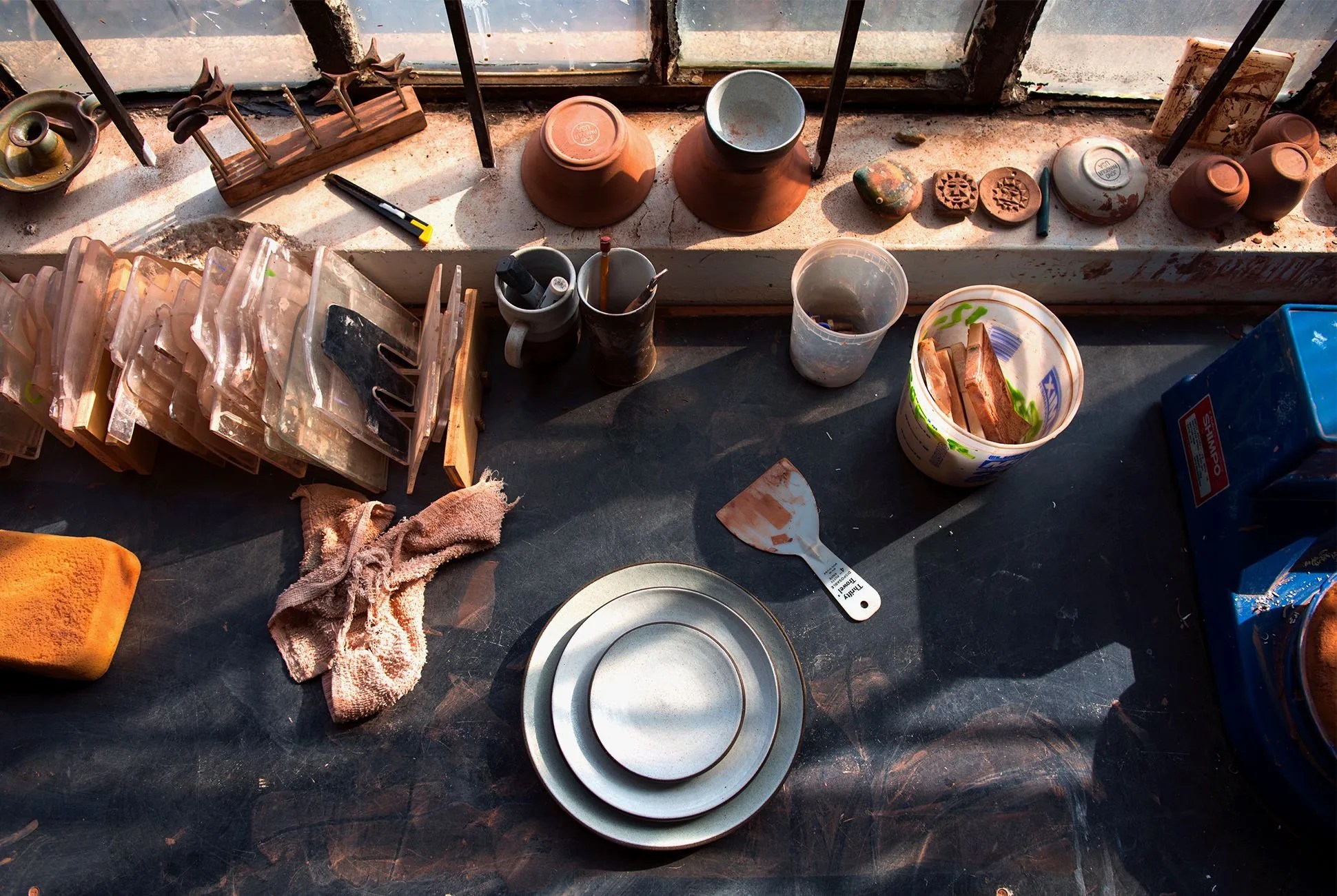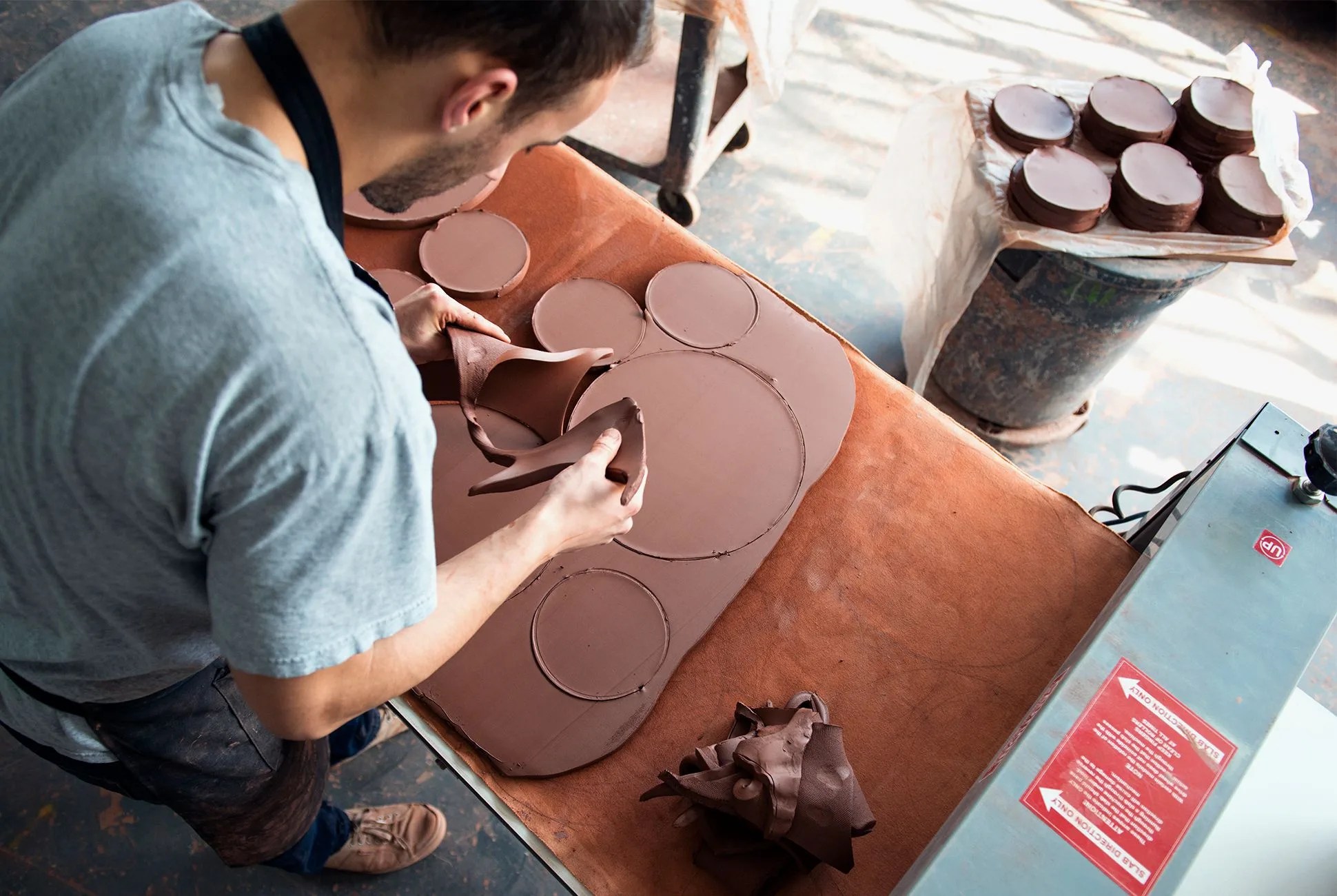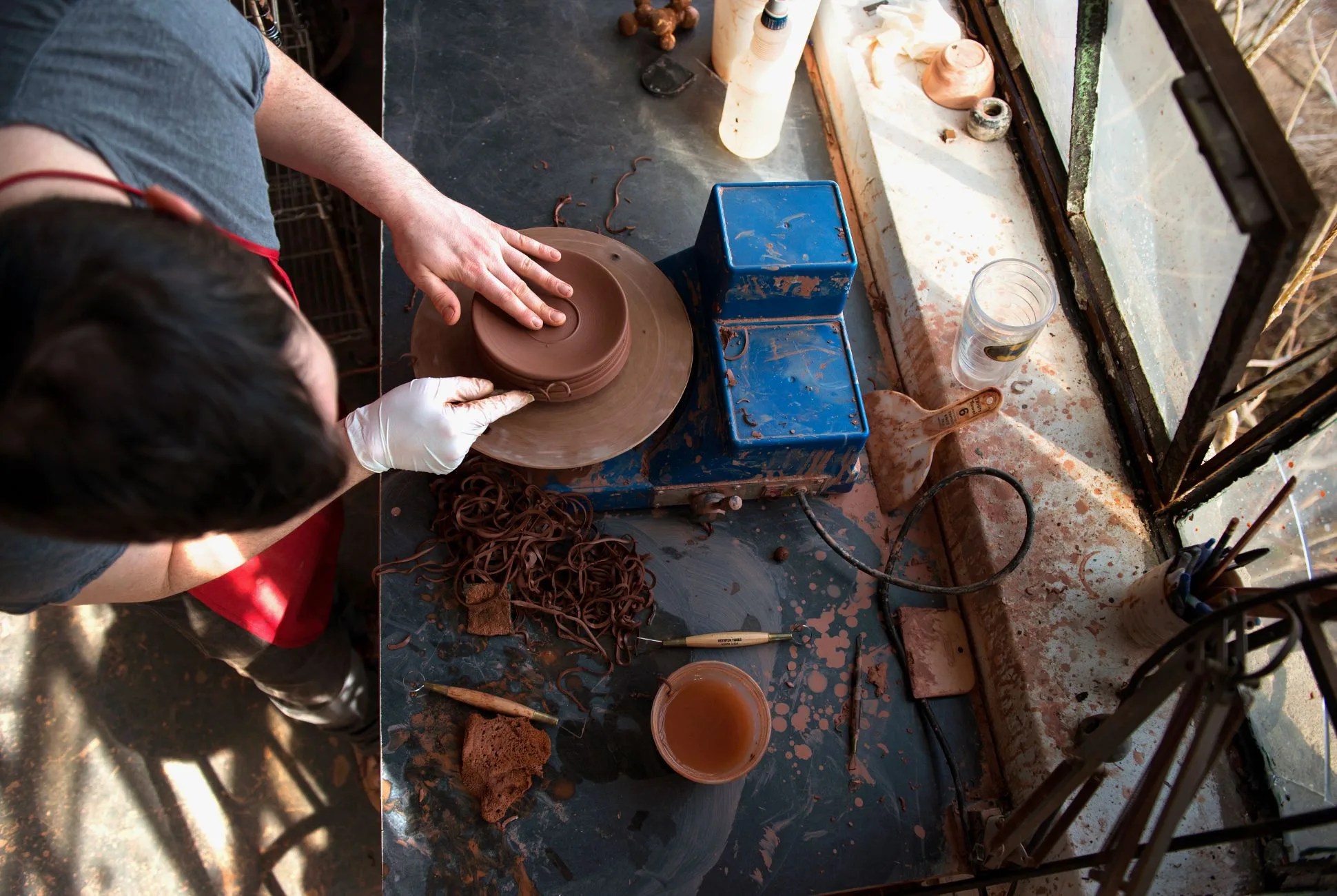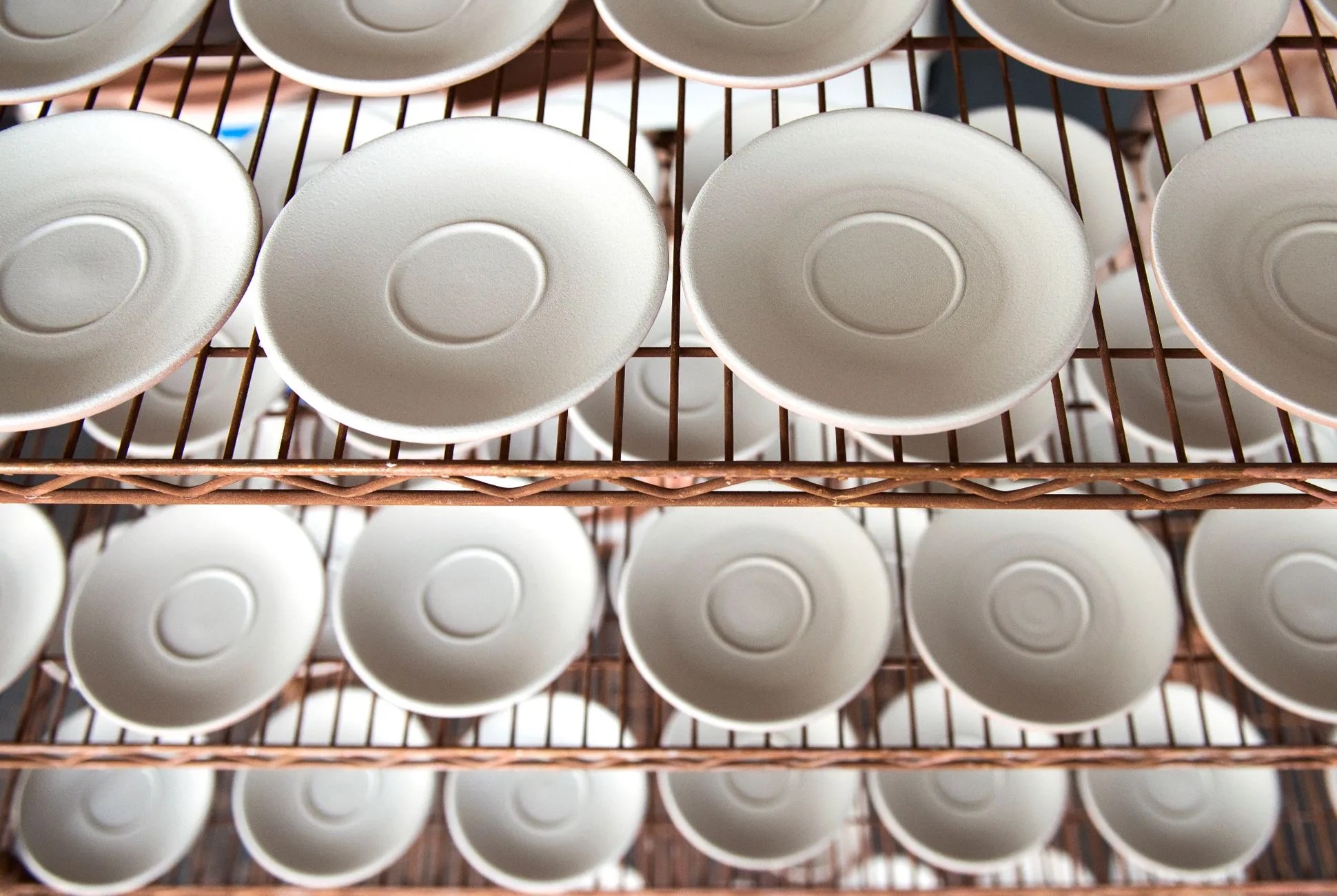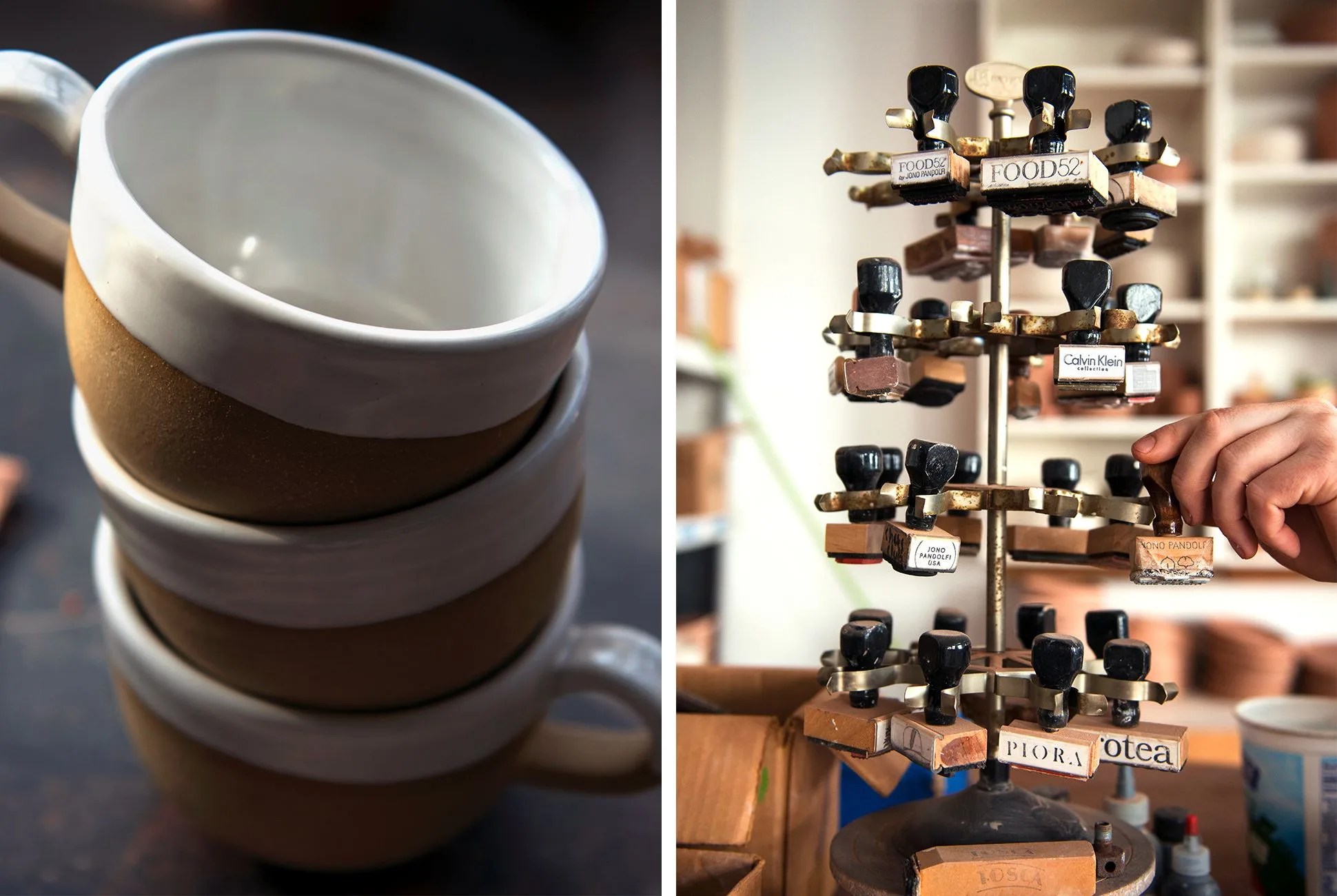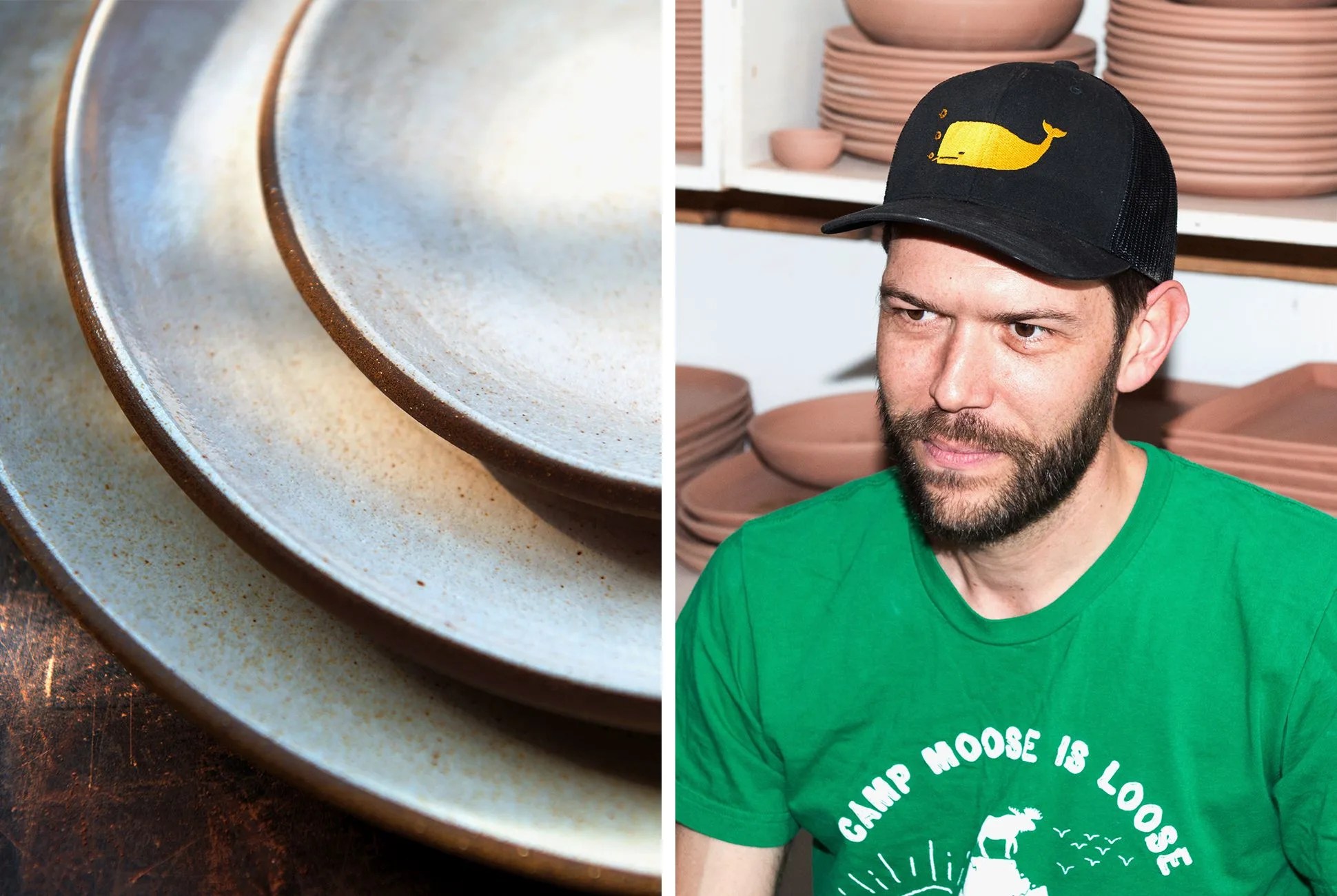Most often, a plate is little more than a solid foundation upon which a dish rests, fading into the background so as not to distract. And yet, in the right setting, the right plate can become just as much a part of the dining experience as the food itself. It’s a delicate balance between understated design and attention-commanding details, and no one does it better than Jono Pandolfi. Most people who have eaten off of a Jono Pandolfi plate would never know it. And yet, since 2004, he has slowly risen to become one of the most seminal ceramicists in America, making a name for himself as the go-to purveyor of dinnerware for some of New York’s best restaurants, including Eleven Madison Park — which many critics consider to be the foremost dining establishment in the United States.
About 12 years ago, Daniel Humm, chef and co-owner of Eleven Madison Park and the NoMad, saw Pandolfi’s work and ordered a few plates. A few plates turned into all of the dinnerware for his then yet-to-be-opened restaurant, the NoMad — an order of more than 6,000 pieces. After the NoMad came dinnerware for Humm’s other restaurant, the superlative Eleven Madison Park. “That was the one-two punch that got me up and running,” Pandolfi said.
“Doing a project like that pushed me as a designer, pushed me as a businessman, pushed me as a potter, pushed me in every way.”
More than getting his business off the ground, working with Eleven Madison Park challenged Pandolfi’s business operations. Whereas his collaboration with the NoMad consisted of 10 styles, Eleven Madison Park claims upwards of 50 proprietary silhouettes. “We’ve done 300 percent more custom, special treatments for [Eleven Madison Park] than we’ve even thought about doing for anyone else,” Pandolfi said. “Doing a project like that pushed me as a designer, pushed me as a businessman, pushed me as a potter, pushed me in every way. That took me to a place where I never thought I’d go, and it has a lot to do with the amount of trust [the Eleven Madison Park team] put in me.”
The Process
At Jono Pandolfi’s studio, clay is de-aired (pugged) and rolled out into inch-thick sheets before being cut with a tracing tool, placed into a mold, and formed with a jigger on a pottery wheel. The clay is then left to dry and bisque fired at 1800 degrees Fahrenheit, solidifying the form and suffusing it with a terra cotta hue. The fired piece is then glazed by hand — often by Pandolfi, himself — and left to dry. A second firing at 2200 degrees Fahrenheit finishes the piece, darkening the clay body, vitrifying it and rendering it less porous (so as to be food-safe).
Pandolfi’s business is built on fully custom, handmade dinnerware for restaurants and hotels, designed to meet the individual needs and requests of each brand. Delivering visually uniform, consistently high-quality products is of utmost importance, and has been integral to his ability to attract new clients, arguably more so than his ability to fulfill an order on time. “What I did for Eleven Madison Park, what I did for the NoMad, what I’ve done for Chef’s Club, what I’ve done for The Musket Room, what I’ve done for Aquavit, what I’ve done for anybody — I have to give that same exact treatment to everyone who calls us, whether it’s a Michelin-starred restaurant in San Francisco or a casino in Michigan,” Pandolfi said. “And I feel good about that. That’s why my brand gets the respect that it does.”
Slow and steady growth has been the key to Pandolfi’s consistent, high-quality output — never scaling too rapidly, staying true to what he knows works, and responding to what draws customers to his studio in the first place. “We have a really efficient process and we let that dictate how we do things,” he explained. “We make a lot, and we know what works and what doesn’t, and we shy away from things that are going to hurt our yield,” like unrealistic deadlines and labor-intensive custom silhouettes.
